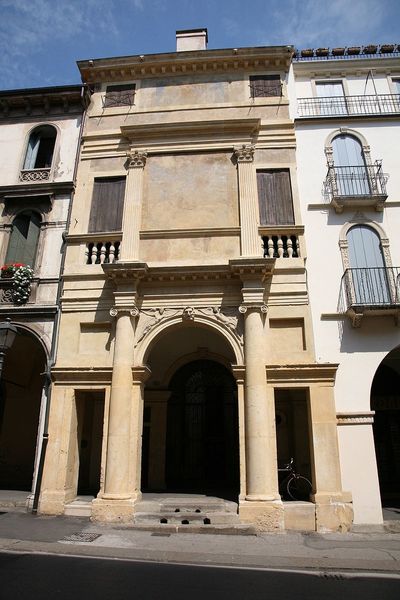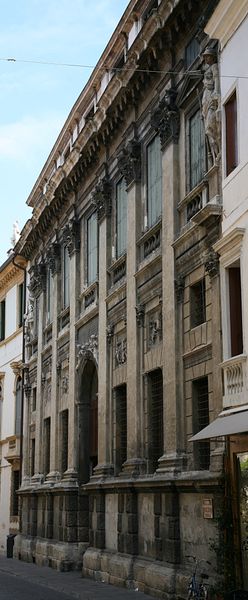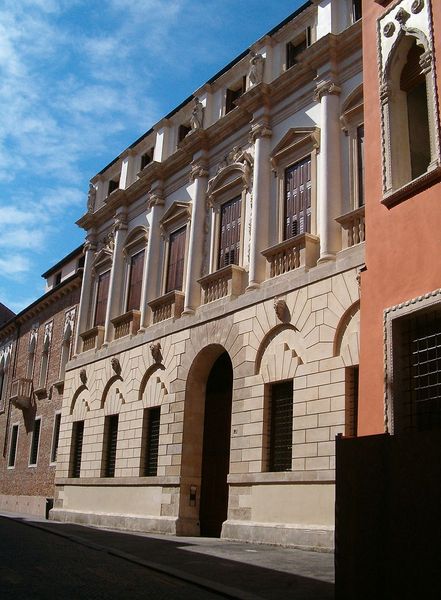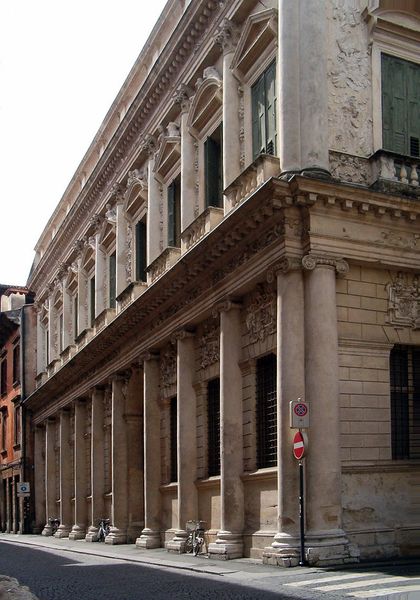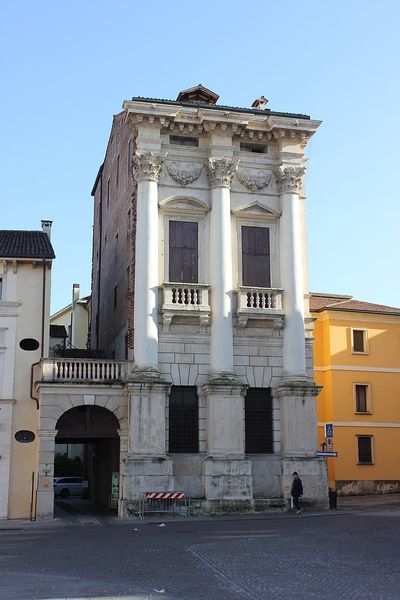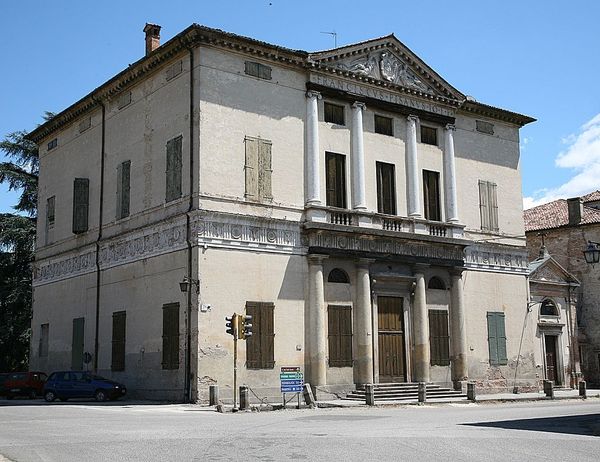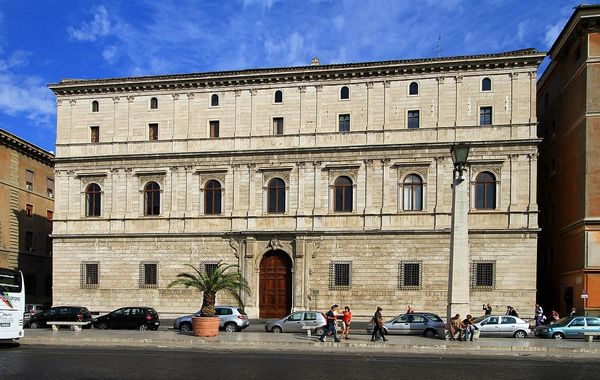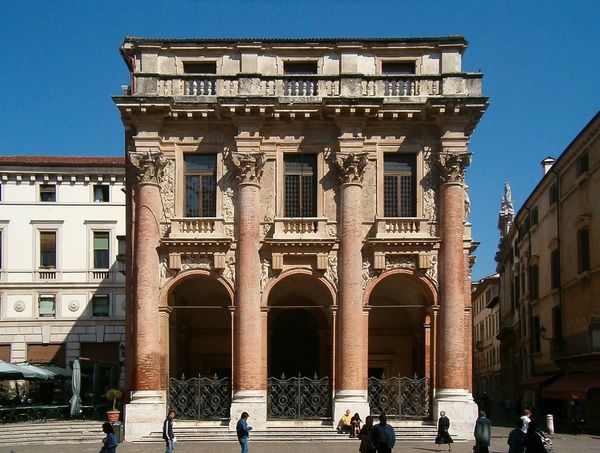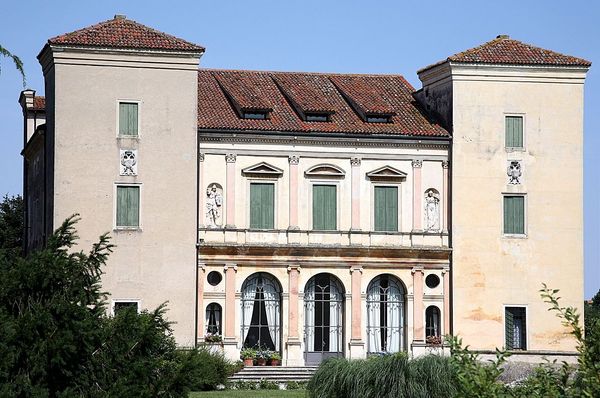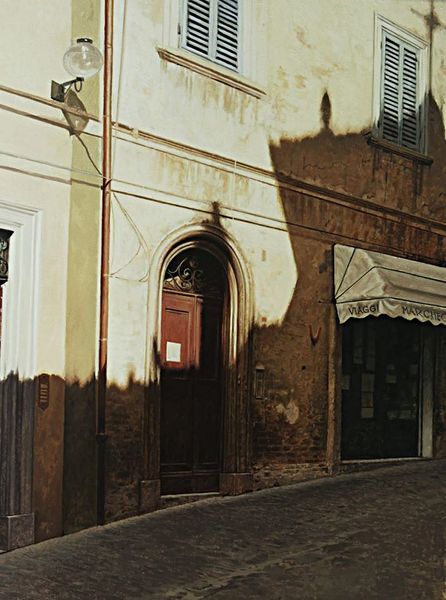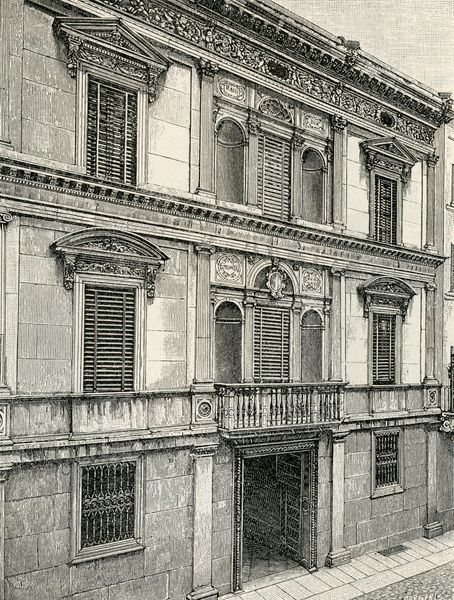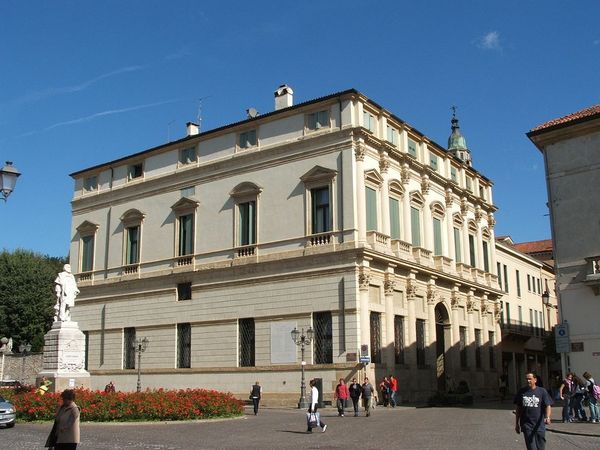
architecture
#
classicism
#
cityscape
#
italian-renaissance
#
architecture
Copyright: Public domain
Editor: We’re looking at the Palazzo Pojana in Vicenza, Italy, built around 1560 by Andrea Palladio, and what strikes me immediately is its imposing but also weirdly pleasing symmetry, with the mix of rusticated stone and refined white plaster. How do you see this building, beyond the standard architectural history? Curator: You know, sometimes I wonder if Palladio ever got tired of rectangles. But then I look at this facade, this controlled harmony, and I think, "No, this man found his joy in proportion." Notice how the ground floor feels grounded, literally and figuratively. It's the bedrock upon which the more fanciful upper floors play. What do you think that contrast is meant to represent, if anything? Editor: Perhaps the earthly versus the ideal? The practical foundation for aspirations of beauty? Curator: Precisely! It's a stage. Palladio's playing with layers – literally the physical layers of the building, but also the social layers, the levels of human endeavor. You have commerce on the street, aspiration on the first floor, and finally, intellect looking down from the upper levels. It’s quite clever when you think about it. And I must say, those ground floor shops… quite an adaption. Did Palladio ever imagine that gelato would be sold where senators once walked? Editor: It does make you wonder what the future holds for even the most iconic buildings. I find it interesting to imagine Palladio observing what we are discussing right now. Curator: And I would enjoy hearing his perspective on architecture, in general!
Comments
No comments
Be the first to comment and join the conversation on the ultimate creative platform.
